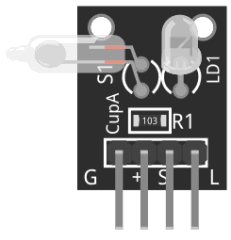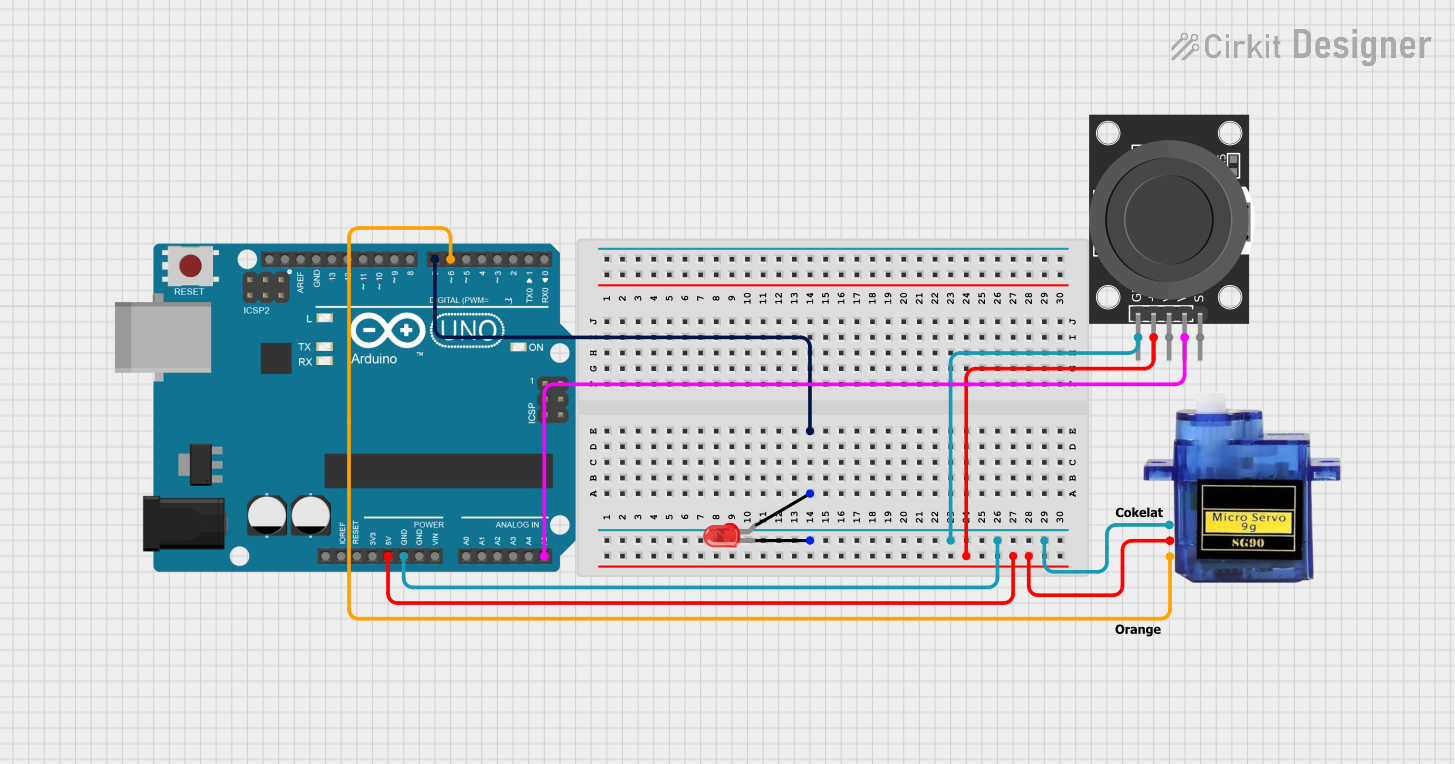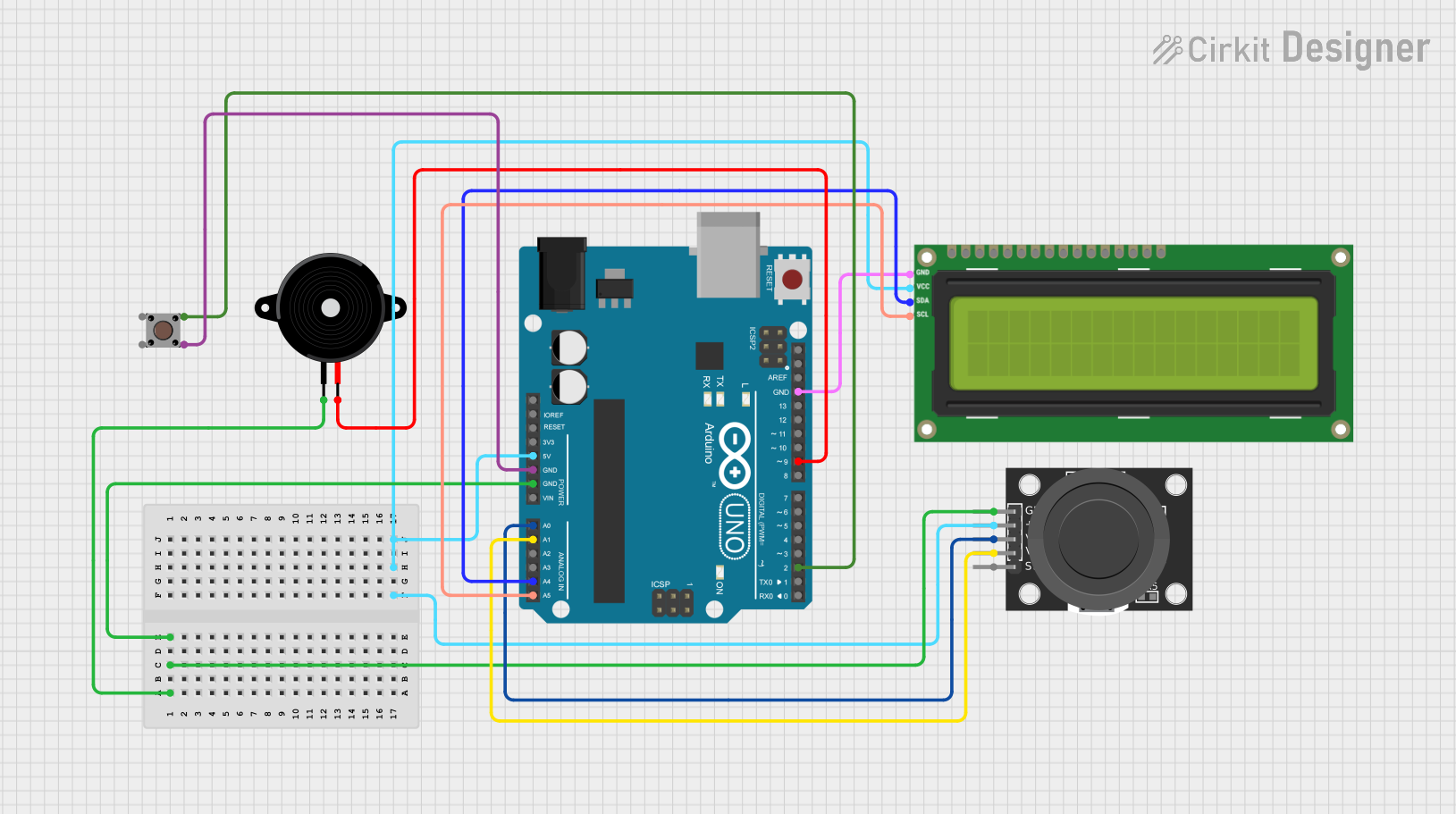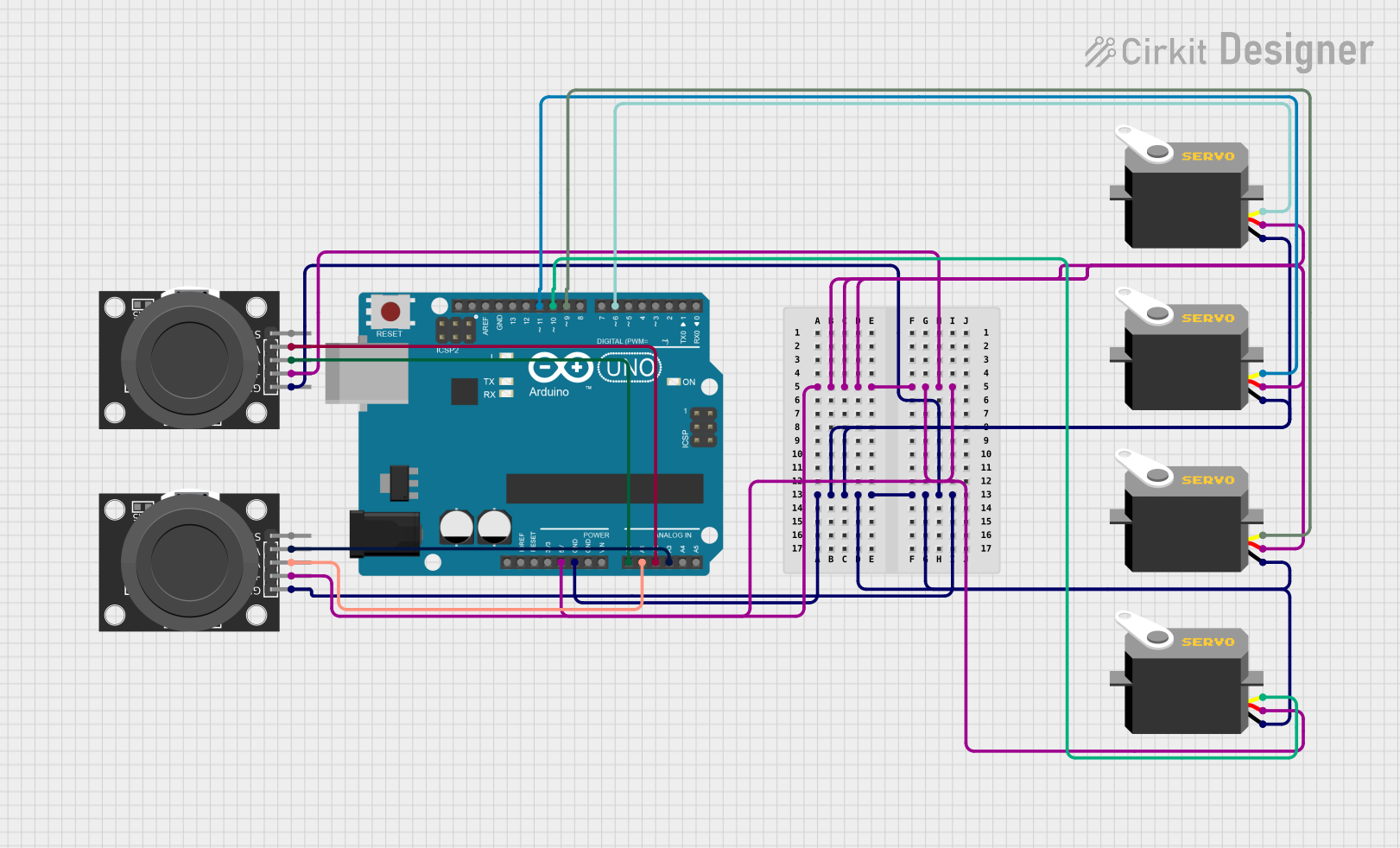
How to Use ky_027: Examples, Pinouts, and Specs

 Design with ky_027 in Cirkit Designer
Design with ky_027 in Cirkit DesignerIntroduction
The KY-027 is a sound sensor module designed to detect sound levels and convert them into an analog voltage output. It is equipped with a microphone and supporting circuitry to amplify and process sound signals. This module is widely used in projects that require sound detection, such as sound-activated alarms, voice-controlled systems, and environmental monitoring devices.
Explore Projects Built with ky_027

 Open Project in Cirkit Designer
Open Project in Cirkit Designer
 Open Project in Cirkit Designer
Open Project in Cirkit Designer
 Open Project in Cirkit Designer
Open Project in Cirkit Designer
 Open Project in Cirkit Designer
Open Project in Cirkit DesignerExplore Projects Built with ky_027

 Open Project in Cirkit Designer
Open Project in Cirkit Designer
 Open Project in Cirkit Designer
Open Project in Cirkit Designer
 Open Project in Cirkit Designer
Open Project in Cirkit Designer
 Open Project in Cirkit Designer
Open Project in Cirkit DesignerCommon Applications:
- Sound-activated alarms
- Voice-controlled devices
- Environmental noise monitoring
- Audio level detection in smart systems
Technical Specifications
The KY-027 sound sensor module has the following key specifications:
| Parameter | Value |
|---|---|
| Operating Voltage | 3.3V - 5V |
| Output Type | Analog and Digital |
| Analog Output Voltage | 0V - Vcc (proportional to sound) |
| Digital Output | High/Low (based on threshold) |
| Microphone Type | Electret Condenser Microphone |
| Dimensions | 30mm x 15mm x 12mm |
Pin Configuration and Descriptions
The KY-027 module has three pins, as described below:
| Pin | Name | Description |
|---|---|---|
| 1 | VCC | Power supply pin. Connect to 3.3V or 5V. |
| 2 | GND | Ground pin. Connect to the ground of the circuit. |
| 3 | OUT | Output pin. Provides an analog voltage proportional to sound levels or a digital |
| signal based on the threshold set by the onboard potentiometer. |
Usage Instructions
How to Use the KY-027 in a Circuit
- Power the Module: Connect the VCC pin to a 3.3V or 5V power source and the GND pin to the ground.
- Connect the Output:
- For analog sound level detection, connect the
OUTpin to an analog input pin of your microcontroller. - For digital sound detection, adjust the onboard potentiometer to set the desired sound threshold. The
OUTpin will output HIGH when the sound level exceeds the threshold.
- For analog sound level detection, connect the
- Read the Output:
- Use an analog-to-digital converter (ADC) to read the analog output.
- For digital output, monitor the HIGH/LOW state of the
OUTpin.
Important Considerations and Best Practices
- Power Supply: Ensure a stable power supply to avoid noise in the output signal.
- Potentiometer Adjustment: Use the onboard potentiometer to fine-tune the sensitivity of the digital output.
- Placement: Place the module in an area free from excessive vibrations or electrical noise for accurate sound detection.
- Analog vs. Digital Output: Use the analog output for precise sound level measurements and the digital output for simple threshold-based detection.
Example: Connecting KY-027 to Arduino UNO
Below is an example of how to connect and use the KY-027 with an Arduino UNO to read both analog and digital outputs.
Circuit Diagram
- Connect
VCCto the 5V pin on the Arduino. - Connect
GNDto the GND pin on the Arduino. - Connect
OUTto both an analog input pin (e.g., A0) and a digital input pin (e.g., D2).
Arduino Code
// Define pin connections
const int analogPin = A0; // Analog pin connected to KY-027 OUT
const int digitalPin = 2; // Digital pin connected to KY-027 OUT
void setup() {
Serial.begin(9600); // Initialize serial communication
pinMode(digitalPin, INPUT); // Set digital pin as input
}
void loop() {
// Read analog output from KY-027
int soundLevel = analogRead(analogPin);
Serial.print("Analog Sound Level: ");
Serial.println(soundLevel);
// Read digital output from KY-027
int soundDetected = digitalRead(digitalPin);
if (soundDetected == HIGH) {
Serial.println("Sound detected (Digital Output HIGH)");
} else {
Serial.println("No sound detected (Digital Output LOW)");
}
delay(500); // Wait for 500ms before the next reading
}
Troubleshooting and FAQs
Common Issues and Solutions
No Output from the Module:
- Ensure the module is powered correctly (check VCC and GND connections).
- Verify that the microphone is not damaged.
- Check the potentiometer setting; it may need adjustment.
Inconsistent Analog Readings:
- Ensure the power supply is stable and free from noise.
- Avoid placing the module near sources of electrical interference.
Digital Output Always HIGH or LOW:
- Adjust the potentiometer to set an appropriate sound threshold.
- Verify that the sound level exceeds the set threshold for HIGH output.
FAQs
Q: Can the KY-027 detect specific frequencies of sound?
A: No, the KY-027 is designed to detect general sound levels and does not differentiate between specific frequencies.
Q: How do I increase the sensitivity of the module?
A: Adjust the onboard potentiometer to increase the sensitivity of the digital output. For analog output, ensure the microphone is positioned closer to the sound source.
Q: Can I use the KY-027 with a 3.3V microcontroller?
A: Yes, the KY-027 operates at both 3.3V and 5V, making it compatible with most microcontrollers.
Q: What is the range of sound levels the KY-027 can detect?
A: The KY-027 can detect a wide range of sound levels, but its sensitivity depends on the microphone and the potentiometer setting. It is suitable for general sound detection rather than precise measurements.